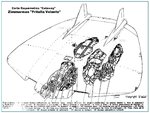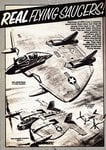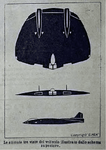As I understand it, high aspect-ratio wings (as a rule of thumb)
High Altitude
Am I onto something?
- Produce more lift at low angle of attack
- Produce less drag due to vortex-generation at the tips (wing body interference might theoretically be lower as well due to less wing being affected)
- Produce more lift for their wing-area
- Are more subject to flexing loads and have higher T/C ratios
- Operate better at high airspeed
- Operate better at higher angle of attack
- Experience less gust-response at low-speeds
- Often require less flexibility
- Often can be designed more easily with a low T/C-ratio
High Altitude
- Flight at altitudes of 25000 to 35000 feet, at Mach numbers around 0.45 to 0.65 seems to favor a wing of moderate aspect-ratio with a high taper-ratio than a high aspect-ratio wing: The Spitfire, Mosquito, Hornet, and P-38 Lightning* seem to be good examples of this.
- Turning-performance at speeds from 0.75 to 0.90, and altitudes of around 40000-50000-feet seems to favor large wings with low/moderate aspect-ratio, often with moderate to substantial taper-ratio: The Canberra, Valiant, Vulcan, Victor, F-102, and F-106 all seem to conform to this.
Am I onto something?




